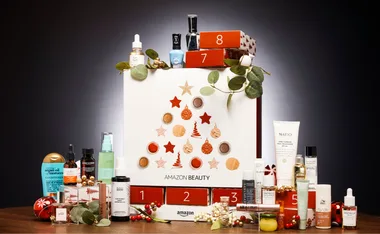In spring salvias bloom red, blue, purple and yellow. They have enormous bushes, taller than I am, with spires of flowers and dozens of eastern spinebills and other birds sipping at the nectar. By midsummer there are great banks of rich purple flowers that keep giving a stunning show all summer long.
At Christmas the velvet-leafed orange salvia begins to bloom, with flowers all the way through autumn. This little darling grows ankle high, in either dappled shade or full sun. And like all salvias, it blooms in the worst of droughts as well as good seasons.
When the rest of our garden is drought withered, the great hedges of salvias are there to brighten our lives and fill our world with birds. Better still, even the wallabies don’t eat them. Nor do slugs or snails. Even grasshoppers prefer to eat green hoses and the washing off the line — which they will do in plague years — before they start to think about guzzling the salvias.
All through winter we have sky-blue salvias in a great hedge buzzing with bees all around my study. They keep flowering till mid-spring.
Salvias are one of the great dependables, no matter what the weather (or the soil or how little time you have for gardening), your salvias will do what salvias do best: survive, flower and give beauty to the world.
What salvias need:
Salvias are said to need full sun, but ours grow just as well in dappled shade too — and give as great a show. They’ll bloom longer if they’re given some water, but even in the worst of years here, we do get masses of blooms.
How to grow them:
All of my salvias began as potted plants bought from nurseries, or cuttings given to me by friends. But in a few years one salvia plant can become 50 — which is why we now have great hedges of them. You just thrust a pruning in the ground, about 60cm deep, and wait.
This year I put some cuttings in dry soil in August. It stayed dry till February — no rain, no watering — we didn’t have water to spare. I assumed they were all dead.
And then it rained … And three weeks later the stumps of the cuttings burst forth with green leaves and now they are just beginning to flower.
Salvias come in many forms. The “long-legged ones”, with great tall stems and flower heads almost 2m tall, need to be cut back to the ground in winter when they’ve finished blooming. Others form bush-like plants, like pineapple sage and fruit salad sage. These bloom from winter to spring, and need to be heavily pruned back when they stop flowering, too, or you’ll end up with a tangled jungle.
The smaller ground-cover salvias don’t need cutting back at all, unless you want material to establish them elsewhere in the garden. But I tend to give all the salvias, regardless of growth pattern, semi-regular haircuts with the long-bladed shears — both tidies them up and also encourage another round of flowers.
Feeding:
I never have, though our soil is fairly fertile by now.
Water:
There’ll be more flowers if you do; some at least if you don’t.
Climate:
Read the label before you buy. Many of the showiest are frost tender. They’ll survive light frosts, but not severe ones. I grow ours near warm walls, next to paving, under trees that shelter them, or on banks where frost seems to flow away and they get lots of sun.
But there are many salvias that cope with heavy frost, too. Ask your local nursery to recommend their favourites. Then maybe start hunting for even more varieties, once you fall in love with those.
How to take a cutting:
Snip back the old canes or break them off one by one with your hands — the wood snaps easily. Trim off the top third of the leaves then poke into the soil where you want them to grow. A few months later nearly all should be growing.
Keep them moist if you can — but not too wet, in case they rot before they root. About 25 percent of my cuttings took during this dry year, but you soon have so much cutting material that you can afford to poke them in all over the place.
When to prune:
Any time they aren’t blooming. This is the perfect time for most salvias — and a perfect time to put them in the ground to grow new plants, too.
Which variety?:
Salvias come in just about every colour. My favourites are a dark deep red, the shaggy purple and bright gold that begin to bloom in autumn here but then gets cut back by the frosts. But there are dozens easily available at nurseries — and hundreds grown by enthusiasts.
Salvias are perhaps the cheapest way to fill your garden with colour and birds and scent. The flowers don’t have much fragrance, but the leaves of most are wonderfully spicy or fruity, though this isn’t the case with all of them — sniff before you buy.
They are also the ultimate in lazy gardening too. Poke a bit of wood into the ground; wait for a profusion of blooms and even more compliments on your green thumb; then prune the tall ones after flowering. The low-growing ones can be left as they are.
And they will survive. No matter what droughts, grasshopper and snail plagues afflict your garden in the year to come, your salvias will be laughing at it all … Or rather blooming, blooming and blooming.
Newsletter conversion description. Get the latest in your inbox.






.png?resize=380%2C285)
.jpg?resize=380%2C285)


























































